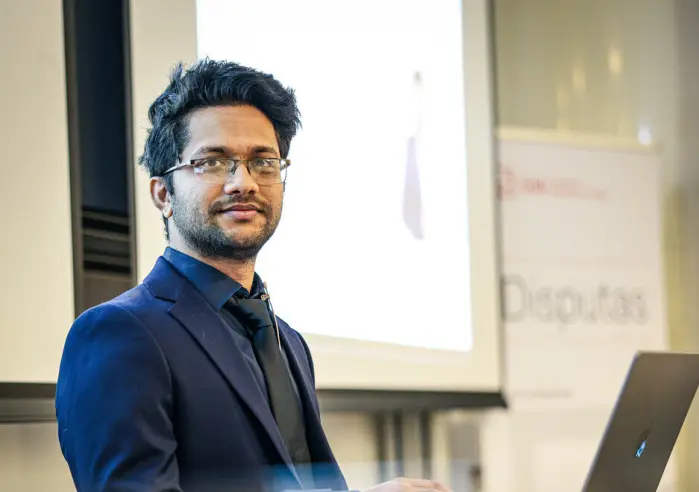THIS ARTICLE/PRESS RELEASE IS PAID FOR AND PRESENTED BY THE University of Agder – Learn more
Rohan Kumar Yadav researches artificial intelligence capable of understanding texts and generating images automatically.
“It’s more efficient and accurate, scales as needed, and produces the content you want faster. These are just a few examples of the positive effects of artificial intelligence,” says Rohan Kumar Yadav.
He is a doctoral researcher at the Faculty of Engineering and Sciences of the University of Agder (UiA). He is also employed at Kobler, a software developer for the advertising industry.
During his PhD, Yadav studied the understanding of what is called natural language processing (NLP):
- It is a branch of artificial intelligence that allows computers to understand natural human language.
- NLP can convert the language we use daily into data such as texts, images or videos.
- If you’ve used Google Translate or Apple’s Siri electronic assistant, you’ve come across NLP.

A simplified daily work life
According to a survey by the Pew Research Center, employment in the media industry fell by 47% between 2008 and 2018.
Yadav now sees that several media houses have quickly embraced technological advancements. The data Yadav reviewed shows that artificial intelligence can automate around 9% of an editor’s job and up to 15% of a journalist’s hectic workday.
“To handle this, we need GPT-3 and DALL-E 2 models. Using these two models, we can design a virtual assistant,” Yadav explains.
GPT-3 is a system where the user enters keywords or short phrases on a given topic and then generates text based on your keywords. He can also translate or summarize your text.
DALL-E 2 is a computer program capable of creating images and works of art based on descriptions.
“For example, if you give DALL-E 2 the fluffy white cat with blue eyes prompt, it creates an image of a cat with exactly those attributes. It’s very good at creating realistic images,” he says.
This shows why the artificial intelligence developed by researchers at Norwegian universities can become an important tool for the future, according to Morten Goodwin. He is a professor at the Center for Research on Artificial Intelligence (CAIR) at the UiA and was one of Yadav’s supervisors.
“In journalism, the ways of writing and illustrating stories will develop. We see these models being developed by the big tech giants. This means that they will control a large part of journalism. When research is carried out by UiA researchers, for example, it ensures the development of reliable tools. It benefits society,” says Goodwin.

not politically correct
However, there are challenges with technology not thinking as rationally or logically as a human being.
Professor in the Department of Computer Science at the University of Oslo (UiO), Jim Tørresen, was the second opponent during Yadav’s recent thesis defense.
Tørresen sees a comparison to the much-discussed AI program ChatGPT, which also uses GPT-3. It makes us think about:
“It can make things more relevant and exciting for the reader, but it also limits the range of knowledge and viewpoints.”

“The reader will not necessarily know that the article or book was automatically generated. This is problematic for today’s news reports. Readers will have to consider whether articles written by ChatGPT are as trustworthy as articles written by journalists,” says Tørresen.
Old school gender role illustrations are also a challenge. If you enter keywords such as “receptionist” or “domestic worker”, it will display text or images of women. While men are represented if the keywords are professions with a higher, more prestigious education.
“There are several reasons for this. Systems may have been trained using data where there are not enough options. Therefore, it is important to monitor and evaluate the results of these systems to check for possible biases,” Yadav says.
“That’s why we shouldn’t replace people with machines, but rather let machines become our good helpers,” says Jim Tørressen. “On the positive side, it can be seen as a tool to help us write better, just as calculators and computers have taken over accounting tasks.”
Can be used in legal services
Nevertheless, the technology seems to have far more positive than negative impacts, as it saves time and money. But can it replace today’s journalists and authors?
“No, I don’t think artificial intelligence can replace journalists and authors anytime soon, but it will make their jobs easier,” Yadav says.
Rohan Kumar Yadav also sees that his NLP research can help interpret documents, such as electronic health records or legal documents.
In order to get accurate results during research work, Yadav based everything on a machine called Tsetlin (algorithms that use propositional logic) and Deep Neural Networks (a system that acquires knowledge about something it does not know not already).
“The goal is to develop a simple but effective platform,” he says.
